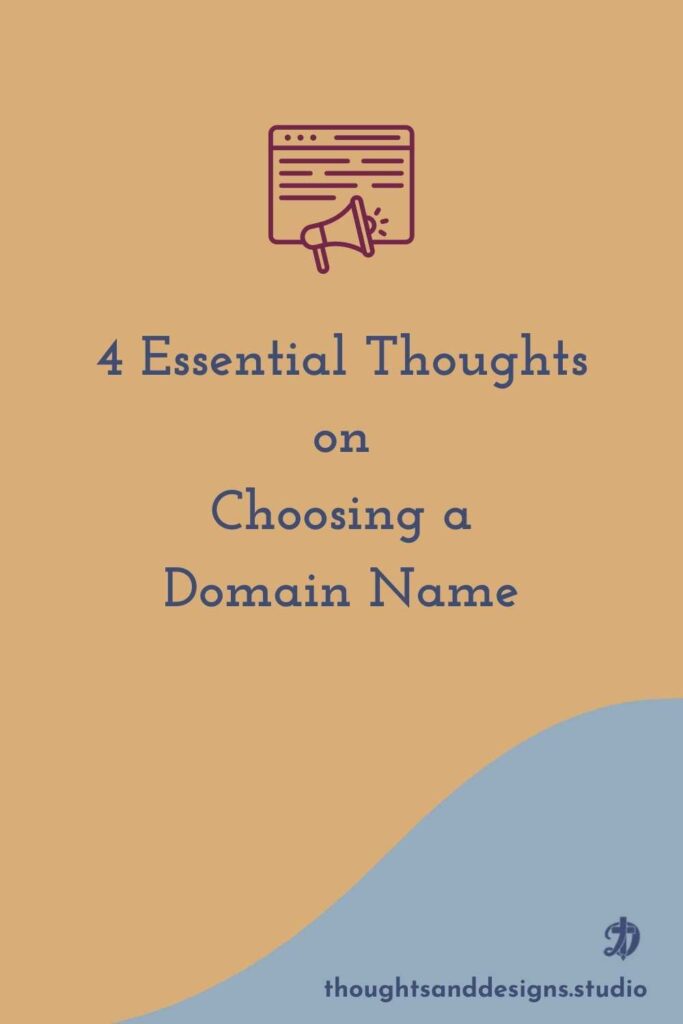First and foremost, when choosing a domain name, as with anything else, think of your audience. They are the ones you’re creating this website for. You’re writing to them. You’re trying to reach them. So, think of your audience when picking out your website’s domain name.
What does considering your audience look like when choosing a domain name?
When choosing a domain name, make sure it is:
Memorable. Choose a domain name that is easy to remember, and sticks in your mind. You don’t want an awkward name when choosing a domain name.
Easy to type. Avoid domain names that might have spelling errors or be difficult to type, especially on a cell phone. Leave off hyphens. Try to avoid double letters. People miss the second “d” in my domain name all the time!
Short. Go for shorter domain names rather than long ones. Choosing a shorter domain name makes it easier to type, easier to remember, and less confusing. Some experts recommend keeping your domain name between 6-14 characters. Imagine you’re driving down the freeway and you see a sign for a website you want to check out later. If your domain name is too long, remembering it will be difficult.
Unique. Avoid any domain name that someone might confuse for another company or another website.
Google has some great advice about picking a domain name too. In a blog post titled “How to come up with a good domain name“, they write,
While it isn’t an exact science, and there are few absolute rules, here are some guiding principles for picking a name that reflects and helps your brand.
How to Come up with a Good Domain Name, Google Domains
I agree with some of their advice, so check that out too, but here are my thoughts as a web designer.
Let me share more great tips for choosing a domain name:
1. Use .com whenever possible
ICANN allowed many new domain extensions in recent years. I wrote more about this in another blog post on domain names.
I even use one of these newer domain extensions: thoughtsanddesigns.studio.
However, many people still type in .com out of habit when trying to reach a specific website. So, wherever possible, opt to use .com for your website. It’s not necessary, but it can be helpful.
As newer domain extensions become commonplace, this will be less of an issue.
Domain extensions depend on your audience and users, too. Would your average customer understand your website doesn’t use a .com at the end of it? It really depends on how internet savvy your audience is.
2. Use Keywords in your Domain Name where Possible
Keywords are words or phrases your customers might use when searching the internet to find a website like yours. For example, I’m a designer and I also create artwork relating to inspirational quotes. My business and domain is “thoughtsanddesigns.studio” which works for what I do.
3. Research your domain name
You don’t want your website to be confused with someone else’s if you can help it. Before starting your website, or buying your domain name, search the domain name possibilities (without the extension) and see what comes up.
Take the time to search the trademark database for your chosen domain name to ensure the name isn’t trademarked. You can research trademarks here.
4. Make it brandable
You want to use your company name in whole or in part when choosing a domain name. My company is Thoughts and Designs LLC, and my company name is in my domain name. Some solopreneurs and freelancers use their own name as their domain name, which may also work for you.


